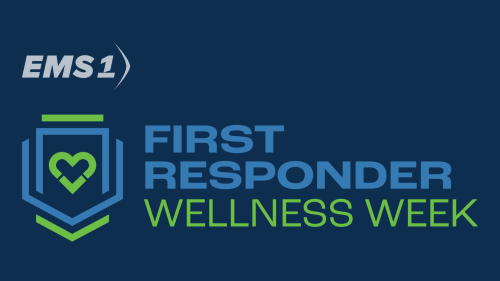By Emily Chavis, EMT-P, NRP
When most people hear someone refer to themselves as a paramedic, or hear “I work in EMS,” they tend to latch on to a stereotypical heroic, angelic and altruistic view of the person. “Thank you for saving lives” and “thank you for your service” are often-used phrases of admiration and gratitude that seem to make a lot of career EMTs and paramedics recoil and politely shrug their shoulders and smile, wanting to accept the kind compliment, but afraid that – in reality – they do not live up to such grandeur.
It’s true, we as emergency medical service providers, do save lives. We save the lives of people of all ages, genders, creeds and colors. We occasionally are able to provide someone a few more moments of life as it’s almost been taken from them.
The generalized view of the EMS and the paramedic profession is one of hope, survival and sustained life, but the paramedic’s view of themself regarding day-to-day endeavors does not always shine and glimmer with valor. There are many, much less talked about roles and occurrences that a paramedic endures and manages in a day on the ambulance that do not overshadow the good, but most definitely add a darker emotional paradox.
From the first EMT program orientation, to the triumphant earning of a national registry certification, we are taught to compartmentalize, or create distinctions and separations between pure emotional response and expressed emotion. EMS personnel are never taught or shown, once they have tucked away certain emotions and recollections, how to cope with the traumatic or impactful event and to be able to move past it when it resurfaces.
I believe that this accepted mentality is one of the main conditions contributing to burnout in the emergency field. The dark experiences in the field each day: abuse, poverty, crime, self-destruction, abandonment of hope and death not only cause heavy and tender emotional triggers, but also create a feeling of “why is this happening,” “what else could I have done,” and “why can’t I fix this?” All of these thoughts, though rhetorical and lacking a realistic or viable solution, still hold a firm place in the paramedic psychological resilience. Whether a practitioner works in a busy, violent urban community, or a slower-paced rural one, the burden incurred due to the lack of resources, or unintended ignorance of how to deal with trauma is somewhat universal.
Other factors contribute to EMS burnout, such as low pay, long/consecutive hours, inadequate benefits, and a lack of opportunities for continual career progression. Stressors stem from the work performed and are expected, but also arise from personal home life and pursuit of sustainability. These quality-of-life necessities, though anticipated and accepted, heavily impact the paramedic’s emotional and physical ability to sustain. It’s not uncommon to see EMS providers become easily agitated, insatiable and somewhat dissociated when trauma, and emotional and physical burden ensue without resources or tools to obtain relief.
Unlike professions such as law enforcement and military occupations in which post-traumatic stress disorder is considered common or related, those in EMS trades seem to be overlooked when it comes to providing mental health services, critical incident stress management, and employee wellbeing oversight.
The film “Bring Out the Dead,” starring Nicolas Cage, portrays the aforementioned struggles in a dramatized realistic fashion. The main character, Frank, is overcome and haunted by his occupational experiences so much so that he falls into a self-destructive lifestyle, with a seemingly hopeless outlook on life in general. One prominent message portrayed in the film is one that justifies Frank’s choice to remain in his position, despite the evidence of his mental instability and inability to maintain a life separate from his work. He feels that the experience of saving a life is the silver lining in the abundance of black clouds, that rationalizes and validates his desire to uphold his paramedic obligation. Though his patient care is becoming more likely compromised, he continues to endure his demons in order to obtain a short-lived, sustaining rejuvenation and glimpse of hope. I believe that these kinds of calls to duty and belief in the greater good are what drive paramedics to withstand the personal and environmental struggles.
I have been working in the field as an advanced emergency medical technician, soon to be paramedic, for 9 years with significant experience in 911 in a high-volume urban setting. The common response when you describe your profession – “I bet you’ve seen some stuff” – could not be more accurate when summarizing my career experiences thus far.
Seeking help
I’ve spent most of my years in EMS compartmentalizing my emotional traumas and experiences. I thankfully was able to recognize that I was experiencing changes in my mental state, involving newly onset depression and anxiety, though I could not identify the cause or reason. After struggling for several months with frequent episodes, I made the decision to seek professional help from a therapist. I knew that what I was experiencing could not be remedied on my own, and that I did not have the tools to sort through my chaotic, unexpected and exaggerated emotions.
In my first therapy sessions, my therapist quickly diagnosed me with PTSD. I began to realize that my encounters in EMS had been subconsciously culminating and resurfacing in a significant and debilitating fashion. Through continued therapy and with a desire to remain diligent in taking care of, and being aware of my mental health, I have been able to make progress in my emotional healing and have learned coping mechanisms to be able to deal with my emotions more acutely. I have been able to gain the ability to explain and recognize my past circumstances so that their burden can begin to be lifted.
I believe that open communication, acceptance of, and normalizing problems in mental health are the first steps in improving the work environment of those in EMS. Providing freely discussed mental health programs and support systems could greatly improve the care rendered by paramedics by allowing readily recognized traumas to be dealt with to improve the quality of life of the practitioners.
About the author
Emily Chavis is a national and state registered paramedic working in the Atlanta metro area for the last 4 years and has been working in EMS for the last 11 years. In addition to having a bachelor’s of science degree in biology, she holds numerous certificates and accreditations in the medical field. A former standout college athlete, Emily enjoyed staring physically fit, playing music, and helping with animal/dog rescues in her community.







